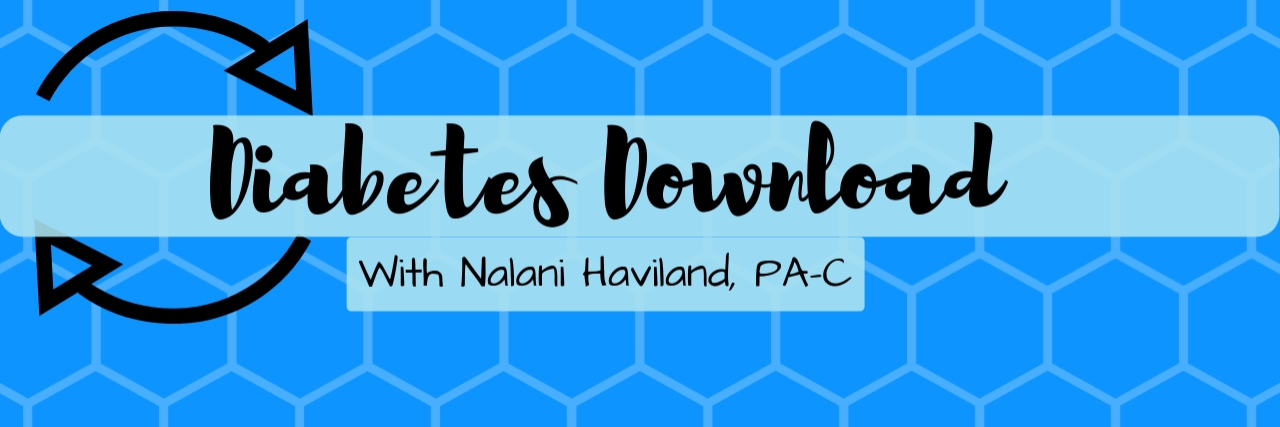Diabetes Download: Why Have I Gained Weight Since Starting Insulin?
In Diabetes Download, Nalani Haviland, a board-certified physician assistant and diabetes expert who has type 1 diabetes herself, answers the Mighty community’s questions.
Editor's Note
Once you start taking insulin to treat your diabetes, you might notice that you’ve gained some weight. In this column, Nalani Haviland, PA-C, explains why this happens, and what to do about it.
This column is solely for general education and information. It is not intended to provide any medical advice and cannot replace or be a substitute for your relationship with your healthcare provider. Always talk to your clinician for any issues or questions.
The Mighty community asked: “Why have I gained so much weight since starting insulin? Is there anything that I can do?”
This is a very common question, and a great one! Many people experience what you are feeling. Weight gain often becomes a problem when HbA1cs are reduced from >9 to 7 or below. The reasons for this are vast and often results in patient noncompliance. But insulin compliance keeps us alive. And weight gain can be avoided if the reasons for the gain are understood.
People with uncontrolled diabetes (HbA1c=>9) often experience weight loss. This is due to either a lack of insulin or a decrease in their cell’s insulin sensitivity. They cannot therefore properly convert food into energy and instead, glucose sits in the blood stream (high blood glucose levels) to be excreted through urine. The person thus is essentially urinating out their calories. Once BG levels improve and insulin is circulating the body appropriately, the cells use the glucose for fuel instead of urinating it out. Fat cells especially like sugar. Hence, the weight gain. This can be avoided by significantly decreasing carb and sugar intake when starting insulin. Try to
fill up instead on vegetables and healthy proteins instead!
High blood glucose levels can also cause severe dehydration. As the body works to clear itself of excess sugar, water is also lost. Once BGs are better controlled, the body will tend to overcompensate for its losses, making it look like significant weight has been gained when really, it’s water retention.
High BGs also cause hunger. The body’s cells starve because they need insulin to use glucose. Often this results in the PWD eating more often or bigger portion sizes than necessary. Once insulin is circulating the body more appropriately, portion sizes may need to be less than what the person is accustomed to.
Additionally, many people develop “defensive hunger” while on insulin. When someone is used to having high BGs all the time, they will feel low at normal levels. That feeling can cause an increase in appetite. This will go away after the body readjusts with time. Additionally, when an actual low BGs occur (<80mg/dl) glucose
(and subsequent calories) may be needed to normalize it. It is therefore important to work with a clinician for appropriate titration adjustments.
The good news is that with the proper coaching, exercise regimen, and dietary modifications, weight gain can be avoided when using insulin. I would also like to stress what is really important here… and it’s not necessarily your weight. Taking an appropriate amount of insulin is essential to good health. In fact, the DCCT study showed that even with the associated weight gain, type 1 diabetics significantly decreased their cardiovascular risk. Withholding insulin for weight purposes is a very serious eating disorder. We need to stop thinking that taking our insulin is optional.
Glossary of Terms
Type 1 Diabetes: A chronic condition that occurs when the pancreas produces little to no insulin. As a result, the body is unable to properly process glucose for energy. It is primarily managed with frequent blood glucose monitoring, diet, exercise, and either insulin pump therapy or multiple daily injections.
Type 2 Diabetes: A chronic condition resulting from insulin resistance and/or an inadequate response to insulin secretion. This results in the body’s inability to properly process glucose. It is managed with frequent blood glucose monitoring, oral or injectable medications, diet, exercise, and sometimes insulin.
Blood Glucose: Another name for blood sugar. Having blood glucose levels that are too high or too low is the hallmark sign of diabetes.
Insulin: A hormone produced by the pancreas. Insulin allows for the regulation of blood glucose and without it, the body cannot process glucose for energy. People with diabetes must get their insulin either through injection or insulin pump therapy.
Diabetic Ketoacidosis (DKA): A complication of uncontrolled diabetes caused by an insufficient amount of circulating insulin. This usually leads to high blood glucose levels and a buildup of blood ketones, byproducts of the breakdown of fatty acids. Untreated diabetic ketoacidosis can lead to coma and death.
PWD: Person with diabetes
Basal Insulin: Also called “background insulin.” In people without type 1 diabetes, the pancreas supplies consistent basal insulin to maintain blood glucose levels between meals. People with type 1 diabetes must inject long-acting insulin to maintain correct blood glucose levels.
Bolus Insulin: Insulin made by the pancreas in response to glucose consumed in food. People with type 1 diabetes must inject rapid-acting insulin immediately before a meal to maintain correct blood glucose levels.
Glucagon: A hormone that treats severe low blood sugar.
Continuous Glucose Monitor: A system that allows PWD to track their glucose levels throughout the day. A small sensor wire is inserted under the skin, and a reusable transmitter connects to the wire and sends readings in real-time to a receiver and/or smartphone app.
Follow me on Instagram at @diabetes_pa, on YouTube, and on my website.

